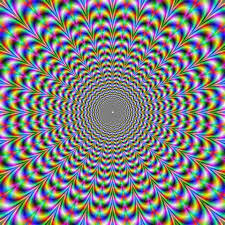This is going take a lot of thought, but I think I am on the right track. And it is worth it, given how much of our lives are in dreams…

Freezers are more efficient when they are full. I presume that brains are more efficient (or just better) when more neurons are connected to each other (synapses). This from Harvard:
…most neuroscientists now believe that the complexity of cellular and molecular organization of neural connections, or synapses, is what truly determines a brain’s computational capacity. This view is supported by findings that intelligence is more correlated with frontal lobe volume and volume of gray matter, which is dense in neural cell bodies and synapses, than sheer brain size. Other research comparing proteins at synapses between different species suggests that what makes up synapses at the molecular level has had a huge impact on intelligence throughout evolutionary history. So, although having a big brain is somewhat predictive of having big smarts, intelligence probably depends much more on how efficiently different parts of your brain communicate with each other.
https://neuroscience.stanford.edu/news/ask-neuroscientist-does-bigger-brain-make-you-smarter
The brain is a giant relational database. Pieces of data connect to each other. If you are struggling to think of someone’s name, running your mind through the alphabet can help. It is just like a computer.
Without dreams, your brain is purely connections that make sense. And they make up just a fraction of all the possible connections. I’m guessing a lot of twos to the power of twos less.
It might be advantageous to build a few more connections, but they can’t just be random – there needs to be a plan.
Deep down we have reptilian brains (read up on this and be creeped out about where many of your base instincts come from…). So it makes sense that how these extra connections come to be, in dreams, is primal.
Threat: recognising anything that can harm you. Of course in modern humans this could be anything from a fear of public speaking, to public toilets, to rejection on a blind date. As long as your brain’s relational database categorises it as fear, it is in.
Relationship: From a primal point of view, I reckon the categories are potential mate, family member, and pecking order (as in alpha male and subordinates).
Location: This needs more thought, because in my dreams places seem familiar, but they are never exact depictions of real places.
Now, in marketing we have this thing in Google AdWords and Facebook Ads where you can provide a set of people who like or use your product, and the ad system will generate a “lookalike audience”.
Lookalike Audiences are a way to reach new people who are likely to be interested in your business because they’re similar to customers you care about.
https://www.facebook.com/business/help/164749007013531
You have a list of real people who are really into your product. Facebook/Google looks at all the commonalities and creates a list of people that are so similar in many aspects that they would quite likely like your product as well.
So here’s the new(?) idea: your brain creates lookalike connections from existing brain connections – and uses them to seed dreams
Take a situation from the preceding day. It might not have bothered your conscious self, but your subconscious does have some concerns. Find a lookalike situation. It will have a similar threat, someone from the same type of relationship, and an imaginary place that includes important aspects of today’s scene. The dream will make the brain connections real, but presumably of a lesser importance to real connections.
In my personal experience, dreams about a particular person typically have a different person representing them. A dream that feels like it is about Max, has Sam as the main character.
So that’s the basic framework. It is certainly much more complicated than that. Dream themes tend to repeat, so there is a feedback aspect. Imaginary locations are repeatedly used. Threats can become obsessive. There’s definitely a learning by rote aspect to dreams as well.
While I’m here… I’m pretty sure dreams are in black and white, but with knowledge of what colours things are. This would save on bandwidth.
I’m also quite sure that rather than 60fps, dreams are more like 1 frame per 5 seconds. More like an MTV video than real life. Just flashes of images that tell a story. Also saves on bandwidth for your sleeping brain.
Read More


